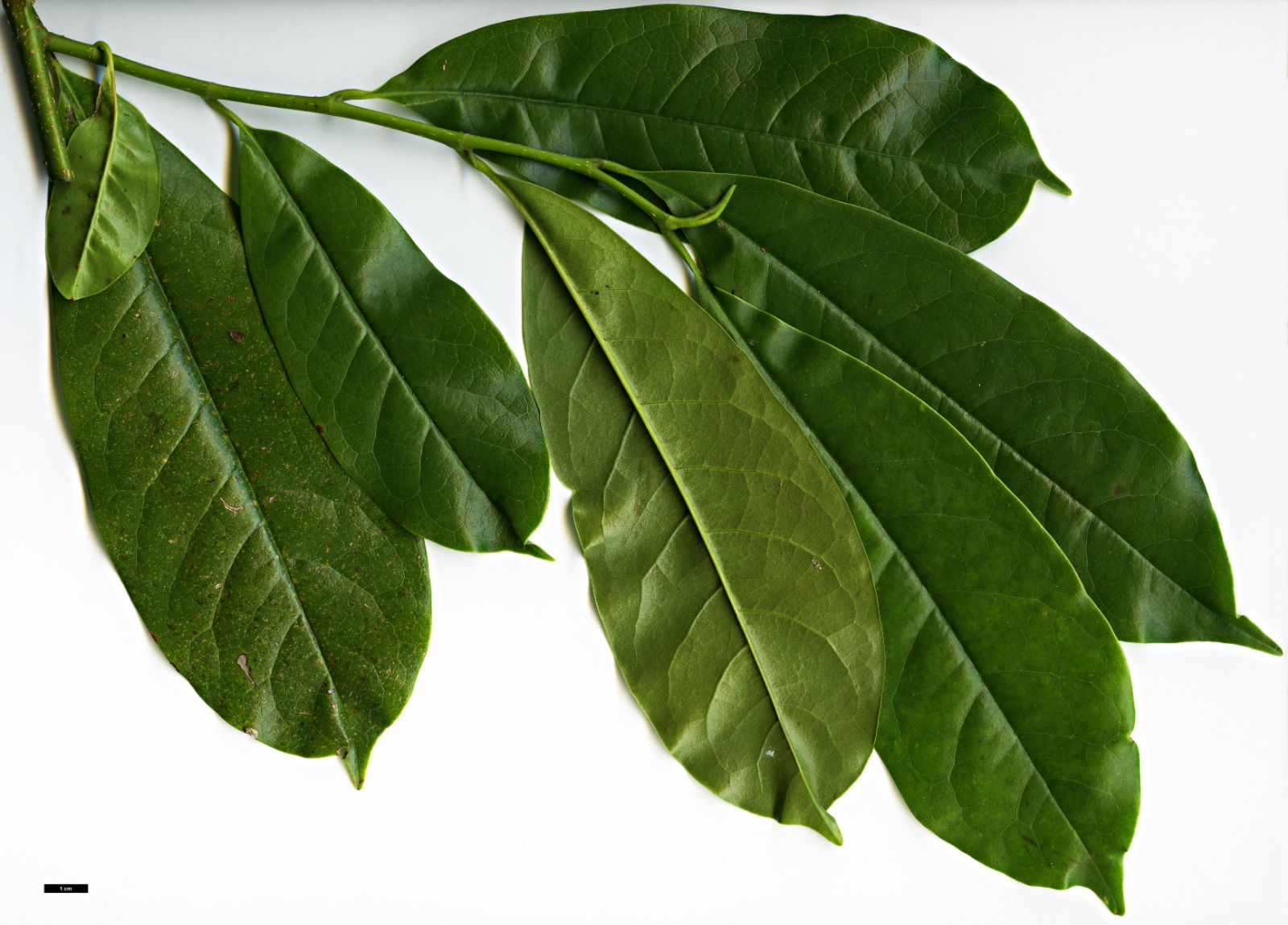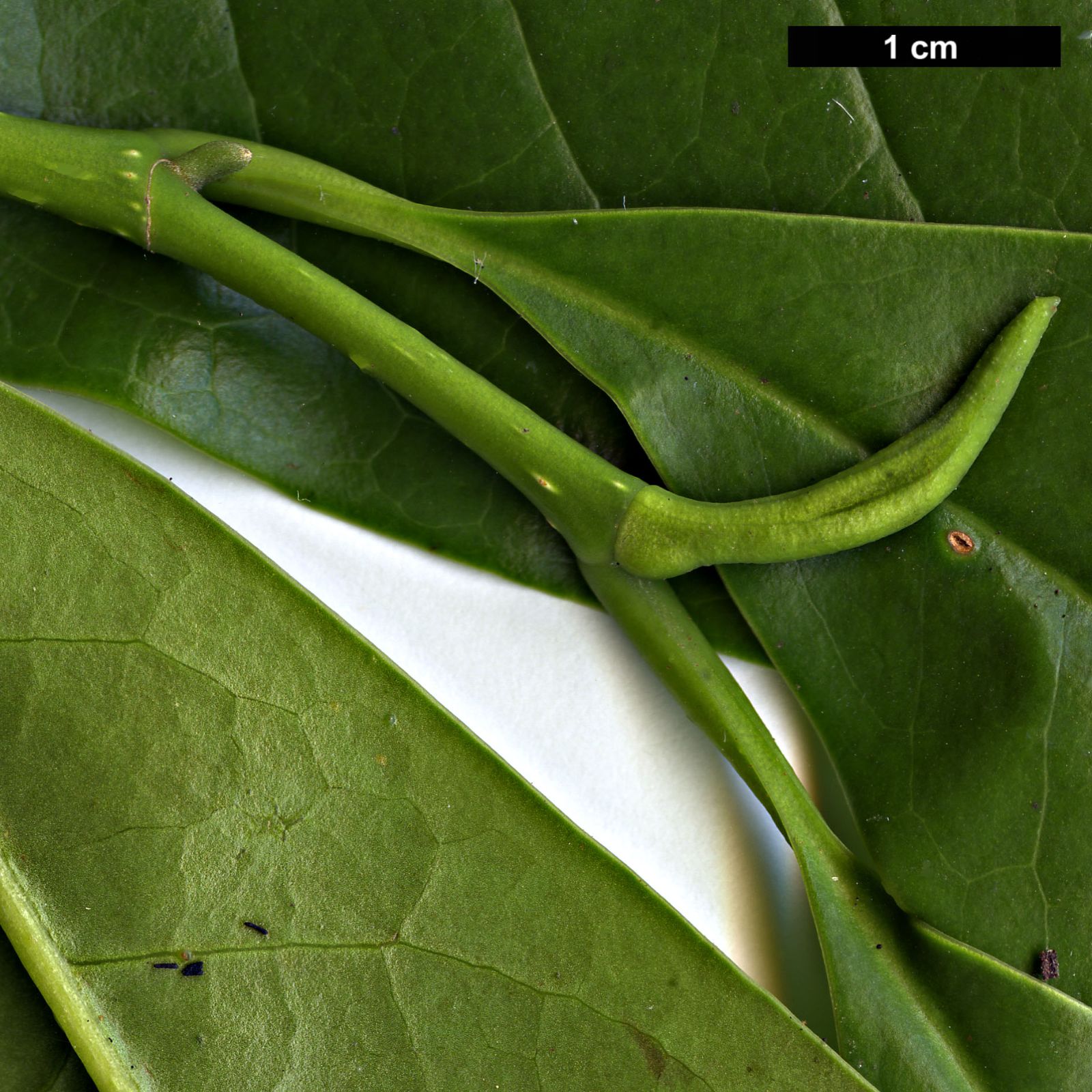Magnolia chapensis
Sponsor
Kindly sponsored by
The Roy Overland Charitable Trust

Credits
Julian Sutton (2022)
Recommended citation
Sutton, J. (2022), 'Magnolia chapensis' from the website Trees and Shrubs Online (treesandshrubsonline.
Genus
- Magnolia
- Section Michelia
Synonyms
- Michelia chapensis Dandy
- Michelia tsoi Dandy
Other taxa in genus
- Magnolia acuminata
- Magnolia × alba
- Magnolia amabilis
- Magnolia amoena
- Magnolia aromatica
- Magnolia biondii
- Magnolia × brooklynensis
- Magnolia campbellii
- Magnolia cathcartii
- Magnolia cavaleriei
- Magnolia caveana
- Magnolia champaca
- Magnolia changhungtana
- Magnolia compressa
- Magnolia conifera
- Magnolia Cultivars A
- Magnolia Cultivars B
- Magnolia Cultivars C
- Magnolia Cultivars D
- Magnolia Cultivars E
- Magnolia Cultivars F
- Magnolia Cultivars G
- Magnolia Cultivars H–I
- Magnolia Cultivars J
- Magnolia Cultivars K
- Magnolia Cultivars L
- Magnolia Cultivars M
- Magnolia Cultivars N–O
- Magnolia Cultivars P
- Magnolia Cultivars Q–R
- Magnolia Cultivars S
- Magnolia Cultivars T
- Magnolia Cultivars U–V
- Magnolia Cultivars W–Z
- Magnolia cylindrica
- Magnolia dandyi
- Magnolia dawsoniana
- Magnolia de Vos and Kosar hybrids
- Magnolia decidua
- Magnolia delavayi
- Magnolia denudata
- Magnolia doltsopa
- Magnolia duclouxii
- Magnolia ernestii
- Magnolia figo
- Magnolia floribunda
- Magnolia × foggii
- Magnolia fordiana
- Magnolia foveolata
- Magnolia fraseri
- Magnolia fulva
- Magnolia globosa
- Magnolia × gotoburgensis
- Magnolia grandiflora
- Magnolia grandis
- Magnolia Gresham hybrids
- Magnolia guangdongensis
- Magnolia hookeri
- Magnolia insignis
- Magnolia Jury hybrids
- Magnolia × kewensis
- Magnolia kobus
- Magnolia kwangtungensis
- Magnolia laevifolia
- Magnolia lanuginosa
- Magnolia leveilleana
- Magnolia liliiflora
- Magnolia × loebneri
- Magnolia lotungensis
- Magnolia macclurei
- Magnolia macrophylla
- Magnolia martini
- Magnolia maudiae
- Magnolia nitida
- Magnolia obovata
- Magnolia officinalis
- Magnolia opipara
- Magnolia × proctoriana
- Magnolia × pruhoniciana
- Magnolia rostrata
- Magnolia salicifolia
- Magnolia sapaensis
- Magnolia sargentiana
- Magnolia sieboldii
- Magnolia sinensis
- Magnolia sinica
- Magnolia sinostellata
- Magnolia × soulangeana
- Magnolia sprengeri
- Magnolia stellata
- Magnolia tamaulipana
- Magnolia × thomsoniana
- Magnolia tripetala
- Magnolia × veitchii
- Magnolia virginiana
- Magnolia × wieseneri
- Magnolia wilsonii
- Magnolia xinganensis
- Magnolia yunnanensis
- Magnolia yuyuanensis
- Magnolia zenii
Evergreen tree to 30 m, 1 m dbh. Bark smooth greyish brown. Branchlets dull brown and glabrous or with dense, short, brown hairs. Leaves evergreen, thin and leathery, somewhat puckered, 5.5–16 × 2.6–6.5 cm, obovate to oblong or occasionally elliptic, both surfaces glabrous, 9–12 secondary veins on each side of the midrib, margins entire, apex acuminate; petiole slender, 1.5–2.5 cm long, glabrous and without scars; stipules free from the petiole, glabrous or slightly pubescent outside. Flowers on axillary shoots, pale yellow and fragrant, brachyblast 0.3–1.1 cm long and slightly tomentose; tepals six, the outer three obovate to oblong, convex and 3–3.5 cm long, the inner tepals gradually smaller; stamens yellow-orange; gynoecium stipitate with 14 or more carpels, glabrous or slightly hairy. Fruits 3–10 cm long and cylindrical; ripe carpels ovoid to oblong, 0.6–1.5 cm long with a short beak and sparse, inconspicuous lenticels. Flowering March to April, fruiting August to November (China). (Chen & Nooteboom 1993; Liu et al. 2004).
Distribution China Guangdong, Guangxi, Guizhou, Hunan, Jiangxi, Yunnan Vietnam N
Habitat Evergreen broad-leaved forests; 500–1700 m.
USDA Hardiness Zone 7b-9
RHS Hardiness Rating H4
Conservation status Least concern (LC)
While still highly experimental, Magnolia chapensis seems to offer the prospect of being a good, fairly hardy tree, with a few vigorous young specimens growing in milder parts of the United States. At the JC Raulston Arboretum an individual planted in 2000 was 5–6 m tall by 2008, although it had yet to flower (Grimshaw & Bayton 2009). In Oregon fast-growing young trees produced a few flowers having reached 4–5 m, but had yet to get into their floral stride. They form a good dark green canopy, and do not demand extra iron in the soil to retain this healthy look (S. Hogan, pers. comm. 2007). Publicly accessible specimens in Oregon include a 1998 accession at the Hoyt Arboretum, Portland (Hoyt Arboretum 2021). In Britain it is recorded from a private Suffolk garden (6 m × 31 cm, 2016 – Tree Register 2021) and Tregrehan, Cornwall (4 m × 9 cm, 2014), where it flowers annually (T. Hudson pers. comm. 2022). If the promise of these specimens is fulfilled this lovely species, grown as a street tree in southern Sichuan (Wharton 2007), with its abundant light yellow flowers, should be worthy of wide planting where climate allows.





